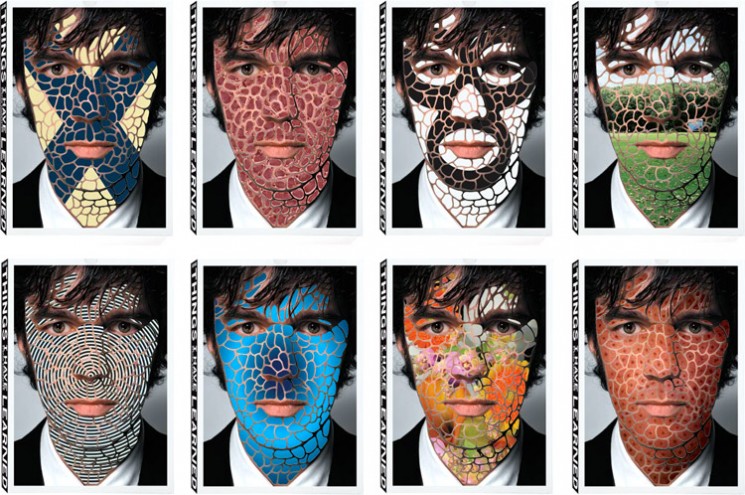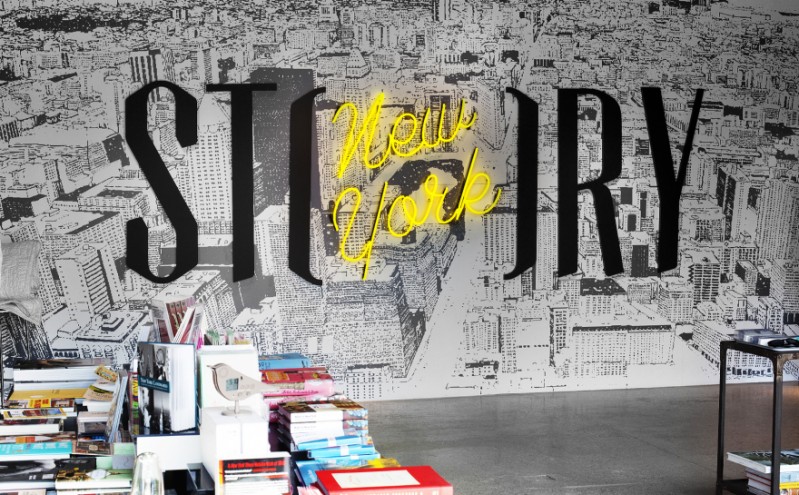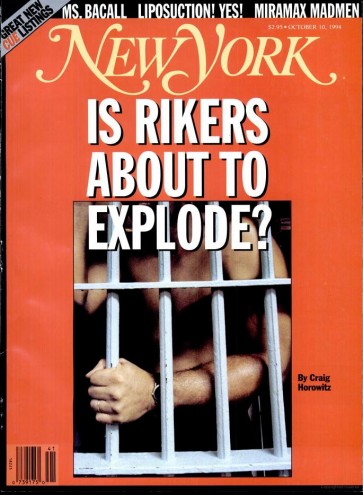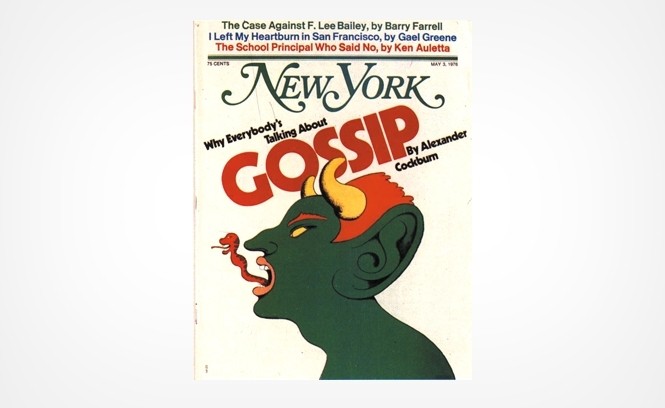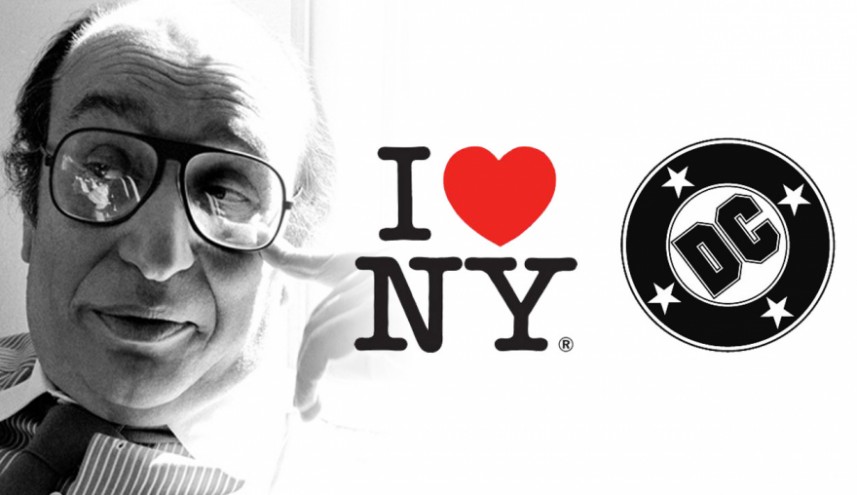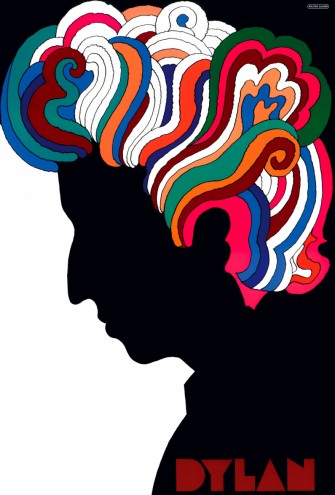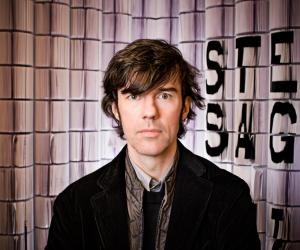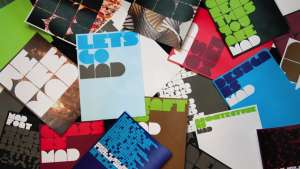From the Series
New York has long been a pivotal juncture of art, business and culture and perhaps because of this is home to some of the world leaders in graphic design. While other cities occasionly compete for the title, New York City is considered by many to be the de facto design capital of the world.
Stefan Sagmeister explains this phenomenon by saying, “In New York there are just a lot of people doing things” as opposed to other cities where “there is a lot of talk about doing things and maybe less about actually doing things”.
The Austrian graphic designer runs his own studio in New York and is renowned for working on particularly personal projects, such as The Happy Show and Things I Have Learned In My Life So Far.
But while many designers advise those entering the profession to find their own voice, Stefan Sagmeister surprisingly disagrees.
“Don’t worry about your own voice,” he says. “It will come by itself. It will be much more difficult to lose your own voice again than to find it.”
“As a young designer or as a student you should try out as much as you possibly can, because this is the time where you really can do that.”
“I’m extremely aware that trying out new things is difficult. It’s much easier doing the stuff that you did yesterday. And to talk yourself into going down a road that you yourself haven’t gone down before yet is much more difficult – it takes guts.”
Michael Bierut is another incredibly talented designer who has based himself in New York. Originally from Cleveland, Ohio, where a career in graphic design was not something to aspire to, Bierut moved to New York after graduating. Early on he was likened to a younger Massimo Vignelli – by the revered designer himself.
Bierut, now a partner at Pentagram, has said that for a graphic designer it’s more important to read than to draw.
“Some people believe knowing how to draw is this sacred rite that we have to undergo,” he says. And while he acknowledges the merit of the hand-eye coordination that drawing helps develop, he believes there’s a greater lesson to be learnt from reading.
“Almost always you’re being asked to work with words,” says Bierut. “Sometimes you’re given a bunch of words and you have to figure out a way to communicate them without using the words. Sometimes you’re given 5,000 words or 12 pages or one website or a book and a manuscript – you’re given tons and tons of words – and it’s your job to figure that out.”
Between founding the Design Observer journal, working as a writer, teacher and design critic, and accepting speaking engagements and interview requests as often as he is able, Bierut has developed a reputation for sharing his opinions publically and advising design students.
His advice to young designers is to use curiosity as a muse.
“There’s always something interesting about every situation, about every project, about every person you work with and your ability to be curious about them. Using your curiosity as your route into the work and shaping the way that you approach the work as you go forwards is one of the most rewarding things that you can find in your career. You can start doing that right now if you want. You don’t need equipment, you don’t need a salary, you don’t need a lot of money, you don’t need a fancy assignment. All you need is your curiosity and your optimism and you can start being a designer this minute.”
(For more key learnings from Michael Bierut watch his talk “Five lessons on graphic design”).
Heralded as one of New York’s greatest designers, Milton Glaser, now 85, is perhaps most well known for designing the logos I ♥ NY and the DC Comics bullet, his Bob Dylan poster and founding New York Magazine in 1968 (whose logo Michael Bierut would redesign in 1994).
“Doubt is better than confidence,” Glaser has said, in his essay entitled “10 Things I Have Learnt”.
“Spirituality speaking, if you believe you have achieved enlightenment you have merely arrived at your limitation. I think that is also true in a practical sense,” says Glaser. “Deeply held beliefs of any kind prevent you from being open to experience, which is why I find all firmly held ideological positions questionable.”
“Of course, we must know the difference between scepticism and cynicism because cynicism is as much a restriction of one’s openness to the world as passionate belief is. They are sort of twins.”
In a very real way, solving any problem is more important than being right. One of the signs of a damaged ego is absolute certainty.
“Schools encourage the idea of not compromising and defending your work at all costs. Well, the issue at work is usually all about the nature of compromise. You just have to know what to compromise. Blind pursuit of your own ends, which excludes the possibility that others may be right, does not allow for the fact that in design we are always dealing with a triad – the client, the audience and you.”

